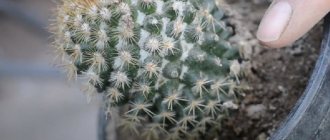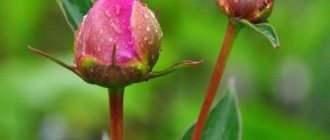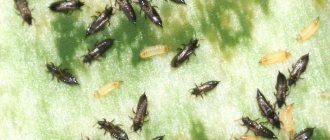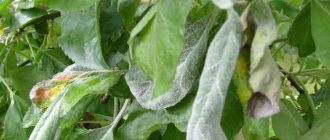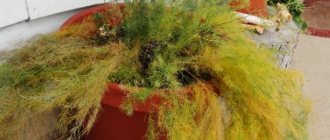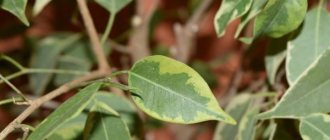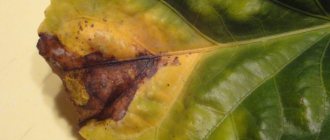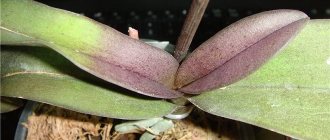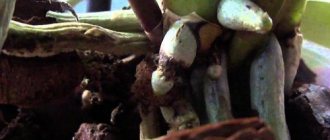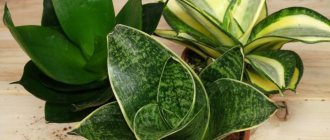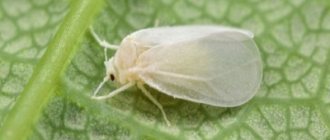Why does indoor lemon get sick?
Indoor lemon requires special growing conditions.
The plant reacts sharply to a lack of sunlight, irregular watering schedules, low humidity and lack of fertilizing. A weakened tree becomes susceptible to disease. The main causes of indoor lemon diseases:
- lack of light;
- incorrect soil composition: poor or too dense;
- rare watering;
- stagnation of water in the soil, lack of drainage;
- lack of minerals or their excess;
- damage to the roots or trunk during transplantation;
- spread of infections from tools or other plants.
Fungal diseases appear when there is excess moisture. They can be carried by pests that appear when using soil that has not been disinfected. Infection can also spread from recently purchased indoor plants.
Why doesn't lemon bear fruit?
Not all lemon trees bear fruit. For many owners, this is simply a beautiful decorative decoration for their home. Why lemon does not bear fruit, the main reasons:
- 1) the plant grew from a seed and was not grafted;
- 2) the tree is not grafted correctly;
- 3) violation of comfortable living conditions (temperature changes and low humidity);
lemon blossom - 4) there are too many flowers and fruits on the tree (experts advise removing excess ovaries, following the rule: “10 leaves - 1 flower”);
- 5) untimely fertilizing (forces the lemon to lose color);
- 6) the plant is sick or infected with parasites.
What to do to make fruit appear on a lemon:
- Provide appropriate conditions for full growth and development.
- Fertilize regularly (in spring and summer 2 times a month, in autumn and winter - monthly).
- Graft the plant correctly (graft a strong tree whose bark is well separated from the wood). For the operation, use a clean and very sharp knife. To achieve the best possible alignment of the branch and petiole, the grafting site is tied tightly and tightly. The result will be judged after 3 weeks.
- Cure diseases and get rid of pests.
- Form the crown so that by the age of three it consists of 7 main branches (at the same time, try not to constantly shorten the tips of thin branches, since it is on them that flowers appear).
- The procedure of tightening the branches is carried out. To do this, in the spring they are tied together with soft wire to concentrate nutritional reserves in them for the next year.
Important! Under optimal conditions, the lemon will bloom 2-3 years after grafting.
What we know about COVID-19
COVID-19 is an infectious disease caused by the coronavirus SARS-CoV-2. Discovered in China at the end of 2022, by May 15 it had infected 4.4 million people worldwide. Most of those with symptoms complain of fever, cough and difficulty breathing. Special medications and vaccines against COVID-19 have not yet been developed. However, virologist and head of the MIPT genome engineering laboratory Pavel Volchkov said that the first effective cure for coronavirus infection may appear in the fall.
In general, the Ministry of Health recommends the use of six drugs to treat coronavirus. these are favipiravir, remdesivir, umifenovir, hydroxychloroquine, azithromycin and interferon alfa.
Causes of diseases in homemade lemons
There are many reasons for lemon diseases. Diseases are usually divided into the following groups:
- Infectious diseases of lemon;
- Pest damage;
- Lemon diseases if care instructions are not followed.
The largest group is infectious diseases. They are divided into the following groups: fungal infections, bacterial infections and viral infections, from which conventional drugs do not save. Lemon is susceptible to many infectious diseases.
Most diseases can be treated, but some have not yet been treated. Lemon is also attacked by harmful insects. Not all types of pests of indoor and garden plants live on citrus species. But it is necessary to carefully inspect lemon trees, especially if they are outdoors in the summer.
Lemon diseases that arise due to improper care indoors are the easiest to eliminate.
You just need to adjust the regime of keeping the lemon tree so that it gets better. In advanced cases, the plant weakens and one of the infectious diseases develops.
Why do indoor lemon leaves turn yellow?
Lack of lighting
The natural environment for lemon is the hot tropics, so genetically the plant needs good, long-lasting light. But this does not mean that the tree should be exposed to direct sunlight. Otherwise, the leaves may burn. If there is insufficient light, yellow spots will appear on the lemon leaves. You need to provide the lemon with sufficient light, especially during the cold season. Try to keep it on south-facing windows or use fluorescent lamps for lighting.
Watering mode
For homemade lemon, it is important to follow the rules and watering regime. A golden mean is needed, because both underwatering and overwatering are dangerous for the root system of a houseplant
Excessive moisture leads to waterlogging of the soil. Heavy soil interferes with air circulation, which leads to root rot. The plant stops receiving enough nutrients. First, the tips of the leaves acquire a yellowish tint, then they fall off and the tree dies.
Select the optimal watering regime, which keeps the soil slightly moist. It is better to water several times in small portions. To be on the safe side, you can put a small amount of drainage at the bottom of the pot: after all, if the top layer of soil is dry, this does not mean that there is not enough moisture inside.
Temperature
Another reason why lemon leaves turn yellow may be a violation of the temperature regime. The fruit does not like temperature fluctuations or drafts. Yellowed leaves will tell the owner that the plant is under stress. The optimal temperature for the development and well-being of the tree will be about 20 degrees. However, the plant can withstand a temperature range from 14 to 25 degrees, the main thing is stable indicators.
Air humidity
It would seem that you have taken into account all the points for caring for lemon, but the lemon leaves still turned yellow
What to do? Pay attention to the humidity level in the room. Excessive dry air is another cause of discomfort for the plant.
It is optimal to maintain the humidity level within 60–70%. After all, high humidity can lead to fungal diseases of the tree.
What measures should be taken? During the summer or heating season, you can place a lemon near the humidifier. If you don't have a humidifier, regularly spray the leaves with soft water at room temperature. You can also place various containers of water near the lemon. Experienced gardeners make a small greenhouse for the plant without a top: such a shelter will protect the plant not only from dry air, but also from drafts.
Lack and excess of fertilizers
Citrus fruits are quite demanding regarding the presence of nutrients and microelements in the soil. If small yellow spots appear on the leaves between the veins, then it’s time to feed the lemon, otherwise the plant will die. Specialized fertilizers for citrus fruits are ideal for feeding. Although you can balance your diet yourself.
But keep in mind that in addition to phosphorus and nitrogen, your pet will also need preparations with magnesium, iron, zinc, potassium, calcium, and sulfur. So if you are not a fanatic gardener, then it is better to buy ready-made fertilizer. An overdose of fertilizers can cause all the leaves to fall off at once. Don’t forget, if you want to calmly enjoy the fruits without risking your health, adhere to measures in the use of fertilizers.
Attack of diseases and pests
Indoor plants are quite rarely susceptible to invasion by various types of pests. But anything is possible. Lemons suffer from the same pests as many other plants: aphids, spider mites, scale insects, and whiteflies. They destroy young shoots and leaves, sucking the juice from them. Holes appear on the leaves, they turn yellow, dry out and fall off.
You can treat the plant with special preparations, but you can also get by with a solution with laundry soap or ash. If this does not help, then insecticides should be used, but use them strictly according to the instructions. The ideal option would be to use bioinsecticides that are safe for people and animals.
To help your citrus fruit in time, pay attention to the slightest changes: deformation of leaves, cracks, release of dark brown juice, change in color of branches from green to crimson or brown. At the first signs of disease, you should immediately change the watering regime and remove the affected areas
These are all the main reasons why lemon leaves turn yellow. But don’t rush to panic, it’s possible that your little lemon is just changing clothes.
Causes of lemon leaves falling off
The question “why does a lemon drop its leaves, what should I do” worries many plant growers. A common cause of homemade lemons dropping leaves is some kind of viral or fungal disease:
- Leaf mosaic (leaves change their shape, dark or light strokes appear on them, reminiscent of a mosaic, the plant stops growing). It is impossible to treat a diseased lemongrass; you can only prolong the life of the plant by regularly feeding and properly caring for it. Experts recommend destroying such a lemon so that the disease does not spread to other plants.
- Cancer of citrus plants (in the initial stages, the leaves and fruits become covered with brown spots, later the lemongrass takes on ugly shapes, the foliage falls off, and the tree dies). It will not be possible to revive a diseased tree, but to prevent cancer, it is recommended to spray the lemon with liquid copper fungicides.
- Tristeza (one of the reasons why a lemon sheds its leaves; in addition, the branches and bark gradually die off, and the tree dies). The disease is incurable and most often affects weakened plants.
- Anthracnose (leaves turn yellow and fall off, thin branches die, the tree may drop its buds, red spots appear on the fruits). Treatment: cut off dried branches, treat the plant three times with Fitosporin, a 1% solution of Bordeaux mixture is also suitable.
- Malsecco (leaves fall off, shoots from the tops begin to dry out, branches turn red when cut). The cause is a lack of lighting; from October to April, the plant needs lighting to increase daylight hours. Treatment with drugs is impossible. If normalizing the light regime does not help, then the plant should be disposed of.
- If affected by root rot, the lemon may also shed its leaves. If for this reason the leaves of a lemon fall off, then you know what to do: dig up the plant, wash and inspect the root system, and remove rotten roots. The lemon is planted in another pot in disinfected soil. For 12-14 days, do not water the plant, but only spray it with warm water and wipe the leaves with a damp sponge.
Rhinitis and food allergies
AR may be the result of a food allergy. In one study, it was shown that it develops in 35% of children with this condition. Among the main food allergens that provoke AR, scientists name peanuts, milk, shrimp and eggs. In Russia, the leading food allergens also include citrus fruits, chocolate, tomatoes, and strawberries. This highlights the need for allergy testing to guide allergen avoidance strategies.
But most cases of food-related allergic rhinitis are the result of cross-allergy. An example would be an allergy to apples in people with hypersensitivity to birch pollen. This phenomenon develops when allergens are structurally similar to each other at the molecular level.
Features of determining element shortages
There are several types of chlorosis associated with a lack of certain substances in the crop’s nutrition. A deficient mineral or trace element can only be determined in a laboratory setting. Not every gardener can do this, so the only way to save plants is to rely on your own observations and understanding of the signs of chlorosis:
- With iron chlorosis, the leaves of the plant turn yellow or white, but the veins on them remain green. The first signs of the disease appear at the top, and then gradually affect all the leaves. Most often, iron chlorosis is observed in plants planted on calcareous soils.
- With magnesium chlorosis, the same symptoms are observed as in the previous version. But in this case, the lower leaves are the first to be affected. This type of chlorosis is characteristic of plants on light sandy soils.
- With sulfur chlorosis, the veins on the leaves first lose their color, and only then the rest of them. The top young leaves are affected first.
- If a plant suffers from a lack of nitrogen, the first signs of a problem are whitened veins. Further from the middle to the edges, the leaves gradually become discolored until they become completely white, wither and fall off. Chlorosis in this case develops due to excess ash or increased soil acidity.
- Chlorosis, which develops due to zinc deficiency, is accompanied by the formation of colorless spots on the lower leaves. Gardeners most often encounter this problem in the spring due to excess nitrogen in the soil.
- With calcium chlorosis, plant growth stops, leaves, ovaries and buds fall off.
General signs of the disease include drying out of all parts of the plant, slowing its growth, curling of leaves, falling off of bark and new shoots.
Fungal diseases of lemons
The vast majority of lemon diseases are fungal in nature - fungi parasitize plant tissues, destroying them.
Chern (black plaque)
Black on lemon leaves.
Photo: Joseph O'Brien Blackhead is a disease of citrus fruits caused by sooty fungi growing on the sweet, sticky secretions of insects that parasitize lemons: aphids, thrips, scale insects, scale insects, whiteflies.
Cherry damages the appearance and weakens plants - a black coating covers the leaves, interferes with photosynthesis, the plant weakens and slows growth.
The plaque is washed off using wet swabs under running, warm water. Along the way, insect pests are removed with water.
Since the disease is caused by insects, the insects must first be removed, and only then the fungal component of the disease must be treated. Without killing insects, the use of fungicides is pointless.
Leaf spot
If dark, wet, irregularly shaped spots appear on the leaves of an indoor lemon, then the lemon is most likely infected with fungi that parasitize the plant tissue.
If lemon leaf spot is advanced, the disease spreads to the stems, and then the plant dies.
Spotting is treated by removing the affected leaves and branches, while simultaneously treating the plant with fungicides. At 4-5 weeks, do not spray the lemon; reduce the frequency and amount of water for irrigation.
Anthracnose
Symptoms of anthracnose on a lemon leaf: rotting spots. Photo: IDTools.org
Anthracnose is a fungal disease of greenhouse and greenhouse lemons, but can also appear in home lemons if the room is warm and humid.
If dark brown spots appear on the leaves of the lemon, including the tips of the leaves, then most likely the plant has anthracnose. Advanced anthracnose causes the leaves to dry out and the entire above-ground part of the lemon dies.
Spots on the fruits of the lemon's relative, grapefruit, are signs of advanced anthracnose. Photo: plantvillage.org
The development of anthracnose is promoted by high humidity, lack of phosphorus and potassium.
Anthracnose, like most fungal diseases, is treated by trimming rotting leaves and branches and treating with fungicides.
Powdery mildew
Powdery mildew is a fungal disease that causes a white, powdery coating to appear on the leaves; leaves curl and turn yellow; the plant slows down its growth.
Powdery mildew on lemon leaves. Photo: The Spruce
Powdery mildew is treated with plenty of fresh air and copper-containing preparations: copper sulfate solution, 1% Bordeaux mixture, etc.
Fungal and infectious diseases: signs and treatment
The appearance of a fungal infection in a short time can lead to the death of the plant. Therefore, it is necessary to promptly identify the first symptoms and choose the necessary treatment method. A fungal infection can be quickly eliminated in the first stages of its appearance; later, when the disease has developed, it is necessary to prune the bush, otherwise the plant dies.
Melseko's disease
The first symptoms of the disease are the withering of young shoots, which gradually dry out completely. After the leaves fall, the cut area turns dark red. The fungus can quickly spread to healthy areas of the plant and also infect nearby crops. The problem is caused by a lack of sunlight, which results in the formation of fungal strains. For treatment, it is necessary to trim off the affected areas. Place the lemon on the sunny side.
Important. There are no drugs against Melseco, so it is necessary to carry out regular inspections of the plant and promptly eliminate the first signs of the disease.
Powdery mildew
When this disease occurs, light-colored spots appear on the leaves. Gradually the leaf turns yellow and dies. This type of disease occurs with excessive air humidity and frequent watering. It can affect not only leaves, but also young shoots. For control, spraying with Bordeaux mixture 1% is used.
Gommosis (gum discharge)
The disease is manifested by the presence of red stripes on leaves and young shoots. With severe infection by a fungal disease, the bark on the trunk begins to die and the leaves fall off. The disease reduces yield, the crop does not bloom and may die in a short time.
To eliminate the problem, it is necessary to prune the infected areas. The cut areas are treated with manganese solution and garden varnish. It is also necessary to spray the lemon with a 3% solution of copper sulfate.
Root rot
The first symptoms of the disease are shedding of leaves and lethargy of shoots. When examining the roots, you can notice black dots that gradually increase in size. To treat the disease, it is necessary to prune the affected areas and transplant the crop to a new place of growth.
Sooty fungus (niello)
Lemon becomes covered with a specific dark coating. Plaque most often appears on the leaves and has a viscous consistency. For treatment, it is necessary to treat the leaves with a light solution of manganese and wash off the remaining fungus with running water. After which the pot is placed in a sunny place.
Important.
Plaque on lemon leaves often causes an allergic reaction. Young children are especially susceptible to this process. Therefore, if there is a disease on the lemon, the pot with the citrus tree should be moved to an isolated room. See also
How to get rid of scale insects on lemon, control measures and the best means for treatment
Read
Scab (citrus warts)
The disease often appears on citrus fruits, affecting leaves and shoots; during fruit formation, warts can be found on green lemons. Fruits affected by scab rot and fall off. For treatment, it is necessary to treat the bush with a 2% solution of copper sulfate. The affected areas must be trimmed with sharp pruning shears and treated with Bordeaux mixture.
Anthracnose
This type of disease occurs when the crop is not properly cared for. The cause of fungus is high humidity in the room. Brown spots appear on the leaves and shoots. The spots gradually increase in size. To eliminate the problem, you need to treat the lemon with Bordeaux mixture. If such a procedure does not give the necessary results, it is necessary to treat the culture with special drugs against fungal diseases.
Rust
The first signs of the disease are brown spots on the leaves. Gradually the spots increase in size. Yellow spots appear on the leaves. Young shoots wither and turn yellow. The lemon weakens and practically does not bloom. Drying of shoots and leaves may occur. In a short time, rust can destroy an adult crop and lead to its complete drying out. You can remove the fungal disease using the drug “Strobilin” or Bordeaux mixture.
Symptoms of tonsillitis.
A symptom that combines both types is pain in the throat. The pain can be both severe and tolerable. The patient experiences severe discomfort while eating and swallowing.
Sore throat is much more severe than a chronic disease and is accompanied by the following symptoms:
- increased body temperature (up to 40°C);
- very severe sore throat;
- enlarged lymph nodes;
- accumulations of pus on the tonsils (plaque, pustules);
- enlarged tonsils;
- headache;
- weakness.
The symptoms and treatment of chronic tonsillitis are somewhat different from the manifestations of tonsillitis. With a chronic disease, the temperature remains at 37°C. A sore throat, cough, and bad breath are added. There is a white coating on the tonsils. The symptoms are less pronounced, since the course of the disease itself is characterized by remissions and exacerbations. A patient suffering from a chronic form of the disease loses his ability to work, gets tired quickly, and loses his appetite. Often a person suffers from insomnia.
Lopinavir and ritonavir
A combination of antiviral drugs called kaletra is used to treat HIV. According to WHO, the use of the drug in combination with other medications is effective in the fight against coronavirus. At the end of January, the Ministry of Health included lopinavir with ritovinar in the list of drugs recommended for COVID-19 as antiviral therapy. As a result, the demand and sales of kaletra increased tenfold. Experts warn that uncontrolled use of the drug without a doctor's prescription can cause harm to health, including diarrhea and liver damage.
Chinese scientists have found that lopinavir and ritonavir are not effective in treating mild to moderate COVID-19. Taking medications does not improve the clinical picture; moreover, it may cause side effects. The experiment involved 86 patients, of which 34 people took a combination of lopinavir and ritonavir, and 17 patients did not receive any drugs. After two weeks, both groups showed similar results, but those taking the medications experienced side effects.
We fight sticky pests
- It should be taken into account that the scale insect is covered with a dense waxy shell and cannot be destroyed immediately, so mechanical cleaning and spraying with chemicals will have to be repeated several times, every 3-4 days, until the spots completely disappear.
- When processing, you need to pay attention to the most inaccessible areas, including the underside of the leaf, its axils, internodes and root zone.
- Chemical control methods can be alternated with less aggressive options. Mix in proportions: 15 ml of soap, 10 ml of 70% alcohol and 1 liter of water. Hermetically isolate the soil from liquid penetration, apply the solution pointwise to the affected areas of the tree.
- If, despite efforts, new spots still appear on the lemon, it is recommended to use the preparations "Aktara" and "Confidor", the dilution method is written on the packaging, both are used for watering and spraying.
Pollen has no place in the house
Pollen provokes seasonal AR or hay fever. In order to take timely measures, you need to know the flowering schedule of the plants to which you are allergic. Here are some tips for avoiding pollen from the English National Health System (NHS) and the Russian Journal of Allergology during the blooming of "dangerous" plants:
- do not dry washed items outside;
- keep windows and doors closed;
- if possible, use air conditioners with special filters;
- To protect your eyes outdoors, glasses with tight-fitting frames will help;
- after returning from the street, you need to change clothes and take a shower;
- walk around parks and fields.
Viral diseases
Diseases caused by viruses are the most dangerous for citrus fruits. To determine which virus caused the disease, special studies are needed, which are not always possible.
Scientists know at least 280 types of viruses that can cause citrus disease.
The main symptoms of such diseases:
- the plant slows down;
- the color of the leaves fades;
- the shape of the foliage is deformed;
- shoots become bent.
Related article:
4 varieties of Gilia: growing secrets
Viruses can be transmitted by pests that fly into the house, bouquets of flowers, or newly purchased new flowers.
Such diseases cannot be treated, so citrus fruits affected by the virus are destroyed.
Lemon pests: prevention
It is difficult to control pests at home; it is easier to prevent pests from reaching indoor plants than to spend weeks fighting them. By following simple pest prevention rules, you can significantly reduce the likelihood of insects feeding on your lemons:
- Careful inspection of “new” plants. Store-bought plants should be quarantined for 3-4 weeks and regularly inspected for lemon pest infestation. It is best, without waiting for trouble, to wash the leaves of purchased plants with running water and soap.
- Keep bouquets away from house plants. Pests often enter the house along with purchased bouquets or with bouquets of flowers cut from the dacha or garden. Remember that most lemon pests reproduce very quickly, so even a few insects pose a real threat to houseplants.
- Preventive flushing. Once a month, wash the leaves and branches of lemons with running water, covering the soil with film. A shower makes plants more resistant to emerging pests. It is also recommended to follow the regimes of watering, lighting and plant nutrition.
- Lemon at home: diseases and pests
- Lemons at home: growing rules
Diseases and pests that cause leaves to turn yellow and fall off
If your lemon was green, received timely fertilizing and watering, had enough light, but still began to turn yellow, then look for the cause in a disease or pest attack.
Methods of infection and control methods
The plant itself cannot get sick, so you need to establish the source of infection.
Recent Entries
Lilac perennials that are beautiful, compact and do not crowd out other plants Why when buying seedlings you should not take the sellers’ word for it and how to determine the age of the plant using 3 signs Tomato seedlings have turned purple or whitish: why the color has changed and how to save the plants
Infection from new “neighbors”
If the lemon is infected from other plants, proceed as follows:
- Inspect all nearby plants and find the source of infection.
- Treat it first, and then your lemon. Look carefully to see if parasites or diseases have spread to other plants.
- Since the lemon does not like it when its geography is changed, move other plantings further away to avoid a second wave of infection.
- Wait 2–3 weeks. Then you can return neighbors if your design requires it.
During treatment, remove other plants and leave the lemon in its original place.
Infection through a window
In rare cases, infection can occur through an open window. The actions in this case are the same: we send the lemon “to quarantine” and spray the plants and soil with preparations.
Infection through soil
Changing or adding soil that has viruses, harmful bacteria or insect pests is also a source of infection. In this case, you can either change the soil again and treat the plant, or use fungicides and insecticides for both the soil and the lemon. During budding and fruiting, you should use preparations that have the “BIO” mark, that is, harmless to humans.
If the lemon becomes infected when changing the soil, you can change the soil again
Identification and treatment of diseases
The correct diagnosis means the correct treatment. To determine the disease, carefully examine the tree or bush.
Anthracnose
This is a fungal disease that causes the foliage to turn yellow and fall off. Characteristic features:
- death of branches;
- bud drop;
- the appearance of reddish spots on the fruits.
To improve health, cut off dead branches, remove spoiled fruits, and spray the plant 2-3 times with an interval of 4 days with Fitosporin or 1% Bordeaux mixture.
With anthracnose, leaf segments turn yellow and dry out.
Chlorosis
Disturbance in the formation of chlorophyll in the leaves can lead to the death of the plant. Characteristic features:
- yellowing begins from the edge of the leaf, while the veins remain green;
- the shapes of the bud and flowers change;
- the size of new leaves decreases.
To improve the health of the plant, water it and spray the leaves according to the instructions:
- Ferovit;
- Antichlorosis;
- iron chelate.
With lemon chlorosis it is difficult to wait for the harvest
If the labels do not indicate the dosage for spraying foliage, then take the dosage for watering and dilute it with water (2 parts water to 1 part solution).
Washing the tonsils.
The procedure for washing the tonsils has a great positive effect, as a result of which pus is released from the lacunae and the medicine is administered. There are several ways to carry out the procedure.
The oldest, so to speak, ancient method is sanitation with a syringe. It is used quite rarely due to its low efficiency and traumatic nature, compared to the advent of more modern methods. The syringe is used when the patient has a strong gag reflex or very loose tonsils.
In other cases, a more effective method is used - vacuum rinsing with a special attachment of the Tonzillor apparatus.
But it is not without its drawbacks:
- the container into which the purulent contents of the tonsils are “pumped out” is opaque, and the doctor cannot see whether the rinsing is complete;
- The design feature of the nozzle is such that when the pressure necessary for complete rinsing is reached, the nozzle can injure the tonsils.
Our clinic for the treatment of tonsillitis offers its patients an alternative painless option for washing the tonsils using the improved “Tonsillor” nozzle - this is the “know-how” of our clinic. There are no analogues of our nozzle in other medical institutions in Moscow. It eliminates the disadvantages of a conventional nozzle: the rinsing container, which is suctioned to the tonsil, has transparent walls, and the otorhinolaryngologist can see what “comes out” of the tonsils. This eliminates unnecessary manipulations. The nozzle itself is non-traumatic and can be used even by children of school age.
Schizophrenia is not a death sentence
Many patients, having learned about their diagnosis, give up on themselves, their dreams and goals, believing that it is impossible to live fully.
This is a big misconception. There are many examples where people, living “in collaboration” with their illness, achieve much more than the average person.
Law professor Elin Sachs has lived hand in hand with schizophrenia for 30 years.
The first attack happened to her at the age of 16, when she was returning home from school. The houses around her became somehow animated, giving her verbal signals. Psychotic episodes then recurred at university. She was suddenly overcome by speech nonsense: Conclusion presupposes presence. And that’s the whole point. Salt is on the nightstand. Sam spoke. Did you kill someone?
She was visited by delusional thoughts about the fact that she had killed many people, she was visited by frightening hallucinations, her thoughts were confused and incoherent. Elin characterized this period as a nightmare, but she was unable to wake up. She was terrified and confused. But classical methods of therapy helped her: a psychoanalytic approach and drug treatment.
Her relationship with medications did not improve right away. For the time being, Ellin believed that the fewer medications, the better. Her therapist tried to convince her otherwise, but she wouldn't budge. She reduced the dosage until, during her next visit to a psychotherapist, she fell on the floor and began to thrash convulsively against it. It seemed to her that strange creatures with knives were attacking her and cutting her into small pieces. As a result, she nevertheless returned to the prescribed medications, and has not parted with them to this day.
When Ellin once again began to talk nonsense in the psychiatrist’s office, he offered her hospitalization, which she had to agree to.
Elin is currently a professor at the University of South Carolina School of Law and a member of the Department of Psychiatry at the University of California, San Diego. In the past, despite her illness, she received a fellowship from the MacArthur Foundation, one of the most prestigious philanthropic organizations. The disorder did not prevent her from successfully getting married at the age of 40.
Her case proves that schizophrenia is not a reason to isolate yourself from the world, including yourself. The disease can be kept under control, you just need to work on yourself.
With her colleagues, Elin conducts research on schizophrenia. They were able to study 20 people who also live with the disease. Most of them have been through more than one hospitalization, most have a diploma of higher or secondary education. Among them are masters, psychologists and lawyers, doctors, technologists and managers, and the general director. They all live an active life and are not used to being discouraged.
Treatment of chlorosis
To treat non-infectious chlorosis, you can use both ready-made preparations and self-made formulations. For each type of chlorosis, it is necessary to select appropriate fertilizers containing a large amount of a substance, the lack of which is felt by the diseased plant.
Iron chlorosis is successfully treated with Ferrovit, Ferrylene, Micro-Fe, Mik-Reak Iron Chelate.
If it is not possible to buy fertilizing, you can independently prepare the iron chelate needed by the plant for iron chlorosis. To do this, you need to take 4 grams of iron sulfate (sold in gardening farms), 2.5 grams of citric acid and a liter of filtered water. Dissolve iron sulfate in water and add citric acid - the iron chelate is ready. The resulting light-red solution can be sprayed and watered on plants affected by chlorosis 2-3 times during the growing season.
[!] Use only fresh iron chelate: over time, the drug loses its qualities. The shelf life of the prepared solution is 14 days.
One of the folk remedies for the treatment of iron chlorosis is the use of nails. To do this, take old, necessarily rusty nails and stick them into the ground. You can also remove rust from old iron and scatter it on the surface of the ground. Oddly enough, this is a very effective method that helps even when ready-made drugs are powerless.
Magnesium chlorosis can be eliminated by fertilizing containing magnesium - Calimagnesia, Dolomite flour, Mag-Boron, Magnesium sulfate, in the concentration recommended by the manufacturer. From available means, to replenish magnesium, we can recommend fertilizing with wood ash.
[!] Do not use wood ash on highly acidic soils.
The lack of sulfur is compensated with the help of special sulfur-containing fertilizers. Typically, such fertilizers are complex and, in addition to sulfur, contain a number of other substances necessary for the plant: potassium, nitrogen, sodium, magnesium, and so on. Among the sulfur-containing fertilizers one can distinguish Kalimagnesia (potassium, magnesium, sulfur), Potassium sulfate, Azofoska with sulfur, Diammofoska with sulfur.
Nitrogen deficiency can also be eliminated with the help of mineral fertilizers, the main component of which is nitrogen. They can be ammonia, nitrate and amide. The most popular ammonium fertilizers are ammonium sulfate and ammonium nitrate.
[!] Follow safety precautions and do not allow ammonium nitrate to overheat - this fertilizer is highly flammable.
Nitrate fertilizers, Calcium nitrate, Sodium nitrate, do not change the acidity of the soil and are used mainly for feeding vegetable crops.
Amide nitrogen fertilizers, of which Urea (Urea) is the best known, require careful and careful handling, since too high a concentration of Urea leads to plant burns.
[!] Do not apply fertilizers containing nitrogen during flowering. An excess of nitrogen slows down the formation of buds.
Zinc chlorosis is successfully treated with the help of fertilizers containing zinc: Zinc sulfate, Superphosphate with zinc, Zinc oxide.
All of the above fertilizers must be used very carefully, observing the dosage and frequency of application recommended by the manufacturer. Thoughtless use of fertilizers leads to plant disease; do not forget that an excess of minerals, as well as their deficiency, is harmful to the health of a green pet.
If you do not know exactly which component your plant is lacking, first try using complex mineral fertilizers containing essential microelements. Such fertilizers include Kemira Lux, Universal, Mortar, Aquarin, Bio Master and many others.
To replenish some mineral elements and feed plants, you can also use homemade compositions, the ingredients for which can be found in any kitchen:
- Ash is an excellent fertilizer for flowers, rich in magnesium, iron, phosphorus and other microelements. For feeding, it is necessary to use only ash obtained during the burning of wood: burnt household waste, and especially polyethylene, cannot be used. Dry ash is mixed with the substrate when replanting plants or added to the top layer of soil. In addition, you can prepare a solution for watering: a tablespoon of ash per liter of water.
- The water remaining after washing cereals also contains a number of essential minerals - phosphorus, magnesium, silicon. It is useful to water the plants with this water from time to time.
- Onion broth, rich in many useful substances, is prepared from onion peels (about 50 grams per liter of water). The broth must be boiled and allowed to brew for several hours. The resulting cocktail can be watered or sprayed on plants.
Just like ready-made fertilizers, homemade mixtures should be used with caution, in small quantities, and carefully monitor how the plant reacts to feeding.
So, the source of the disease has been found and treatment has been carried out. How do you know that chlorosis is no longer scary for green beauties? Everything is very simple: the disease has receded if the newly appearing young leaves are colored in the usual color, without yellowness or whiteness. At the same time, old leaves, unfortunately, will not change their chlorotic color.
Dust and its mites
The dust itself is not as dangerous as the mites living in it. And ticks are not as dangerous as their secretions. Dust mites or house dust mites live in carpets, pillows, mattresses and feed on flakes of people's skin. Ways to deal with them:
- Humidity control. Air conditioning and climate control can help with this. As humidity drops below 50%, mites slow down their reproduction and may even become inactive.
- Acaricides are chemical preparations against ticks. They can be used to kill mites in carpets and upholstered furniture. Their use in combination with other methods relieves allergy symptoms to mite allergens.
- Bed arrangement. Choose pillows and blankets filled with artificial fibers; avoid feathers and down. Impermeable (anti-mite) mattress covers and pillowcases help relieve allergy symptoms. Bedspread fabrics should be lint-free and easy to wash; they should be washed regularly.
- Cleaning with a vacuum cleaner with special filters, systematic wet cleaning.
Fertilizer shortage
When these plants are grown at home , a common cause of damage to the above-ground parts or root system is a lack of nutrients.
But by the appearance of citrus fruits, an amateur florist can always determine which macro and microelements the tree lacks. Important! If spots of a light yellow tone appear on the leaves at the base of the tree, then the tree does not have enough nitrogen fertilizers. If you do not fertilize in time, the foliage will fade and fall off.
Yellowing and curling of lemon leaves
With a small amount of phosphorus, the color of adult foliage fades, spots appear at the ends of the leaves, then turn brown with a rusty tint.
If there is little potassium fertilizer in the soil, then folds or grooves appear along the veins of the foliage.
With a lack of iron, a network of brighter veins appears on the foliage.
Lack of manganese and zinc - in this case, the foliage becomes lighter, and a greener network of veins appears on them.
Related article:
Autumn treatment of greenhouses against pests
If citrus fruits lack manganese and boron, then few ovaries are formed on the trees, and those that appear quickly fall off. When there is an excess of these microelements, the edges of the foliage begin to dry out.
Scale insect and false scale insect
Scale insects as a pest of young lemons.
Photo: GardenWeb Scale insects are small sucking pests of lemons that resemble small turtles, up to 5 mm in size. Larvae and adult insects are harmful. Scale insect larvae are mobile and can migrate from plant to plant, even along a windowsill.
Having reached the plant, the scale insect larvae attach to it and begin to grow, secreting liquid from the glands, which forms a shield on the insect’s body that protects the scale insect from chemicals. Adult scale insects are motionless and difficult to separate from the plant. During the year, females give birth to 2-3 generations of larvae.
Scale insects settle on lemon leaves, along the veins at the top and bottom of the leaf, and on the fruit. The leaves become sticky, turn yellow and wither.
In the initial stage, scale insects are almost transparent, whitish in color, barely noticeable. Adult insects are noticeable after the growth of the scutellum: light gray round ones - scale insects and brown oval ones - false scale insects. Plants weaken and yields decrease.
How to deal with scale insects? The easiest way to get rid of scale insects is at the initial stage of colonization of the plant - they are inactive and do not bite. Collect a small number of scale insects by hand, and then wipe the leaves and branches with a cotton swab or toothbrush dipped in a solution of laundry soap or alcohol.
Folk remedies for scale insects:
- Water-oil emulsion. This is a more concentrated version of a similar emulsion to combat spider mites. 1 teaspoon of machine oil, 2 tablespoons of washing powder and 40 g of laundry soap are thoroughly mixed in a glass of warm water. The prepared emulsion is applied to all leaves and branches of the plant using a cotton swab. It is necessary to ensure that the emulsion does not get into the soil; to avoid this, cover it with plastic film before starting treatment. After 3.5-4 hours, the plants are thoroughly washed with clean water. The treatment is repeated at least 3 times, the break between treatments is 5-6 days.
- Garlic porridge. Dilute grated garlic and laundry soap with water in a ratio of 1:1:3. Using a toothbrush, apply the resulting pulp to all parts of the plant (leaves, branches, trunk). After about an hour, the pulp is washed off the plant with water.
- Decoction of bitter capsicum. Pour crushed pepper pods (100 g fresh or 10 g dry) into 1 liter of water, boil for 30 minutes and leave for 2 days. Before use, 1 tablespoon of concentrate is diluted with 1 liter of water, adding 1 tablespoon of grated laundry soap to the solution. After 2 hours, the plant is washed with water. Spraying is carried out every 2 weeks until the pests disappear.
Attention: A decoction of hot pepper can be used against aphids and spider mites
Pests on lemon
Of course, in indoor conditions it is more difficult for insects to get to the plant, but there are still ways.
Shchitovka
This is a hemiptera insect with a small (0.5-5 mm) body covered with a dense shield consisting of one or two larval skins and a secretory waxy part. Because of this, scale insects on the plant are sometimes perceived as droplets of wax. Young insects move actively, settling throughout the lemon. In adulthood, scale insects lose the ability to move and stick to the plant. Feeding on its juice, they themselves secrete a sweet liquid, which accumulates on the leaves and shoots, making them sticky. It clogs pores, preventing respiration and photosynthesis. This liquid is also a breeding ground for sooty fungus. If you do not fight the pest, the result will be disastrous - the leaves will curl, dry out and fall off, the plant will weaken and die.
Scale insects on the leaves resemble droplets of wax
Insecticides are used to kill pests. The contact preparation Fitoverm can be used against young larvae, but adult insects are reliably protected from its damaging effects by the shell. Therefore, systemic drugs that penetrate the plant’s vascular system will be more effective. Pests, feeding on poisoned juice, die. The best of this group for lemon are Aktara and Aktellik. They can not only spray the crown, but also water the soil to enhance the effect. But it should be remembered that Actellik has a strong unpleasant odor, so it can only be used outdoors. In addition, you can use various folk remedies - onion and garlic infusions (they are prepared by keeping chopped vegetables in water for about half a day at the rate of 50 grams per half liter), soap-kerosene solution (per liter of water 40 grams of grated soap and 1 ml kerosene) and others. In the initial stages of insect damage, you can wash off with soapy water using a brush or sponge.
Aphid
The smallest (0.5-3 mm) insect is widely known to everyone who has a garden, vegetable garden or indoor plants. As a rule, light green aphids can be found on lemons. Its harmful effect is similar to that of the scale insect - the aphid also feeds on the sap of leaves and shoots, secretes a sticky sweet liquid, and curls the leaves. The means and methods of dealing with it are also similar.
Light green aphids are more common on lemons.
Spider mite
This pest has microscopic dimensions (0.2-0.6 mm), and is not easy to see with the naked eye. Therefore, it is usually possible to detect its presence on a lemon only after some part of the leaves is damaged. Settling on the underside of the leaf, these arthropod arachnids pierce the leaf blade and feed on the sap. On the front side of the leaf, yellow spots form around the punctures, which are used to determine the presence of a mite. Subsequently, the leaves curl into irregularly shaped lumps, which the mite entangles in a web, thus equipping a nest.
Very small yellowish dots on the leaves indicate damage by spider mites
Insecticides are powerless against ticks. They are fought with acaricides (these are special anti-tick preparations) and universal insectoacaricides, for example, the above-mentioned Fitoverm and Actellik. In indoor conditions, Demitan is used, which successfully copes with the parasite, but it is dangerous for fish, so you should protect the aquariums in the house from getting into them.
Mealybug (white aphid, hairy louse)
It is small in size (from 3 to 6 mm) and has an oblong body, covered with a powdery, cotton-like white coating. Like the previous pests discussed, it is sucking and feeds on sap from all parts of the plant. A variety of citrus mealybug can also attack lemon roots. It's very easy to get rid of it. Since the bug is afraid of moisture, when it is detected, it is enough to simply bathe the lemon in warm soapy water, thoroughly washing off the insects. Then you should treat the crown with a strong-smelling infusion, for example, tobacco or garlic, to repel new pests.
The mealybug has an oblong body covered with a mealy, cotton-like white coating.
Video: Aktara treatment for pests
Viral tree lesions
A citrus tree that is affected by a viral type of disease is difficult to treat. Such diseases lead to a lack of harvest and withering of the crop in a short period. The virus is transmitted during watering or by the wind. Also, the cause of infection with the virus can be soil and tools that have not been previously treated with a special disinfectant.
Citrus cancer
Symptoms of the disease are dark spots on the leaves. Lemons lose their shape and are often small in size. The virus quickly spreads throughout the plant, causing the leaves to fall off. At the first symptoms of the disease, it is necessary to remove dry shoots and spray with liquid copper.
Important. If there is a large accumulation of cancer symptoms, treatment does not produce results, so the plant must be removed
Otherwise, the infection will spread to other vegetation.
Leaf mosaic
The disease rarely appears on lemons. The virus manifests itself by the presence of large numbers of spots on the leaves. The shoots become pale and lose their color.
Tristeza
This type of virus occurs rarely. The lemon loses all its foliage, and the shoots gradually begin to die. The virus cannot be completely cured, so if symptoms of the disease occur, the plant must be removed. Most often, the cause of the disease is poor-quality planting material.
Sticky coating on lemon leaves
Sticky plaque not only spoils the appearance of the tree, but also inhibits its development.
Sticky spots on leaves
Reasons for the appearance of a sticky layer:
- inadequate care;
- excessive watering for a long time;
- the plant was attacked by scale insects;
- Aphids appeared on the lemon.
The first 2 factors are easily eliminated after studying the relevant information on proper plant care. Scale insects and aphids are pests that are difficult to control, but quite possible.
Note! Sticky golden resin on reddish-brown spots and cracks on the trunk and branches of a tree is a sign of homosis, the causes of which lie in a lack of potassium and phosphorus, an overdose of nitrogen or poor soil.
How does high blood pressure manifest?
The danger of hypertension lies in the fact that high blood pressure affects internal organs over the years, but does not manifest itself externally. Hypertension has no specific signs: all complaints arise only when the disease affects various organs and systems of the body. With a prolonged increase in blood pressure, the following may appear:
throbbing headaches; dizziness, loss of coordination; impaired memory, ability to concentrate; facial redness; increased sweating; fragility of blood vessels, nosebleeds; blurred vision, flashing “spots” and “floaters” before the eyes; tinnitus; irritability, unreasonable feelings of anxiety; weakness, fatigue.
When should you see a doctor?
Hypertensive patients need to undergo regular medical examinations to monitor the course of the disease and assess the risks of complications. It is imperative to seek medical help in the event of a hypertensive crisis - a sharp rise in blood pressure to high values. The condition is accompanied by symptoms such as:
- headache, dizziness;
- difficulty breathing, feeling of lack of air;
- nausea, vomiting;
- cardiopalmus;
- chills, trembling, feeling of heat;
- heartache;
- muscle tremors, cramps;
- loss of consciousness.
An ambulance should be called immediately in case of acute pain in the chest, disturbances in speech, consciousness, facial expressions, movements in the limbs - these signs indicate myocardial infarction or stroke.
Prevention
Regular inspection of the plant and temporary prevention of possible diseases can prevent dire consequences.
It is necessary to periodically remove all dried leaves from the plant (read about why lemon leaves turn yellow and then dry at the end and around the edges). How to save a plant? It is also important to monitor temperature and water conditions. The plant needs to be washed several times a month. Pests are much less likely to appear on clean plants. You can wipe the lemon with soapy water, which will prevent the appearance of various pests.
Prevention of diseases and pests of indoor lemon
Diseases are easier to prevent than to treat. After all, even in case of successful healing, the lemon will remain weakened for a long time.
Prevention includes the following points:
- compliance with watering rules;
- maintaining optimal air humidity;
- timely pest control;
- disinfection of garden tools, soil and planting material;
- compliance with temperature conditions;
- applying a sufficient amount of fertilizing;
- transplantation into disinfected soil and preventive treatment of new plants;
- weekly preventive examinations;
- weekly washing of the plant in the shower;
- sanitary pruning.
Reasons for the development of chlorosis
As with any disease affecting plant crops, the success of combating chlorosis depends on its timely detection. However, it is not enough to see chlorosis; it is necessary to identify the cause of its development and eliminate it. Most often, leaf chlorosis occurs due to:
- deficiency of microelements and minerals;
- penetration of an infectious pathogen obtained by transfer from a diseased plant through insects;
- oversights when planting and caring for a plant;
- hereditary transmission of a tendency to chlorophyll deficiency.
Correctly identifying the cause of the disease allows you to develop an effective strategy to combat it.
Dangerous symptoms
In some people, high blood pressure is asymptomatic, but in most cases the following symptoms are observed:
- weakness and fatigue,
- pressing or throbbing headache in the occipital and/or temporal part,
- nausea,
- dizziness,
- chest pain,
- noise in ears,
- shortness of breath during habitual physical activity,
- numbness of the limbs,
- blurred vision, flashing spots before the eyes,
- irritability,
- increased sensitivity to light (sometimes to sounds).
The appearance of even one or two of the symptoms listed above should be a cause for concern. Some people prefer to simply “endure” an episode of high blood pressure “so as not to be poisoned by all this chemistry” (that is, pills). But such manifestations cannot be ignored, since, as we said above, high blood pressure is fraught with a number of dangerous consequences.
How to save ficus benjamina from completely dropping its leaves?
Carry out diagnostics and determine the cause
Check the lighting level in the room. To measure the amount of illumination, it is not necessary to buy a lux meter; you can simply install an application with the appropriate name on your smartphone and measure the amount of lux by placing the smartphone against the crown, with the screen facing outwards, at different times of the day. You can also place a smartphone with the application turned on inside the crown. At the same time, the data obtained using the application may not be entirely accurate and it is better to check it with a professional lux meter.
Examine the plant carefully. Spots on leaves, curling, soft branches or trunk, and wilting leaves are signs of disease or improper care.
Next, carefully inspect for any pest infestation (such as Mealybugs or Spider Mites).
You should also inspect damaged leaves and compare their yellowing/redness/dryness, etc. with signs of lack/excess of nutrition (all signs are also collected in another article).
Clean the plant from damaged parts
Yellow leaves and dry (easily crumbling) branches must be cut with pruning shears or sharp scissors. If the problem is overwatering and rotting of the root system, you need to remove the plant from the pot and cut off (or remove with your fingers) all soft (+ dark brown) and dry roots (they are not elastic when touched and are relatively easily separated from living roots. Dead roots inhibit the development of new ones , interfere with the receipt of necessary nutrients, and also contain bacteria and microorganisms that contribute to the further spread of rot.
Start plant treatment and prevention
Next you need to act depending on the reason:
- If so, you should radically clean the root system. Treating the roots with a root system stimulator and a fungicide (for example, Kornevin with foundationazole) will help prevent further rotting. Treatment can be of 2 types - simply sprinkling powder on the root system and planting the plant in new soil and a new pot, or spraying or soaking (up to 15 minutes) in the solution.
- If - it is necessary to give the plant a shower (covering the soil with polyethylene), washing off the pest. After the water has dried on the leaves, treat (spray) with a solution of laundry soap, leave on the plant for up to half an hour (not allowing it to dry completely) and rinse again in the shower. After 2-3 days, inspect the plant again; if the pest appears again, repeat the procedure, clean the plant of the pest and, after drying, treat (spray + spill) with a broad-spectrum insectoacaricide. After a week, inspect the plant again. If a pest is detected, repeat the process with another insectoacaricide. And so on from 3 to 5 weeks (no more).
- If - feed the plant with complex fertilizer in half the dose. And repeat feeding after 2 weeks. (If this happens in winter, then 1 time is enough).
The tips of the lemon leaves dry out
Description of the reasons why leaf tips dry out:
- dry air;
- low or high room temperature;
- using tap water for irrigation;
- too dense soil in the pot;
- waterlogged or overdried soil.
If the end of the leaf dries out due to dry air, then you need to increase the humidity in the room. You can place a cup with wet expanded clay next to the citrus tree, regularly spray the tree and wipe the leaves, or buy an air humidifier for your home.
Note! Drying of the tips is also accompanied by yellowing of the foliage.
It is not recommended to use tap water for irrigation. It contains a large amount of fluorine and chlorine, so it is too hard. It is better to use purchased and rain water or melted snow. You can also boil and then settle tap water. Before watering, add a few drops of lemon juice or a little citric acid to soften it.
If the soil in the pot is compacted, you need to replant. In order for the lemon to grow normally, transplants are carried out once every 2 years. If necessary, lemon can be replanted every year. Regular transplants will help revive the citrus.
Also, the edges may dry out due to improper watering and temperature disturbances. In summer, the soil should not be over-moistened, and in winter, it should not be allowed to dry out.

